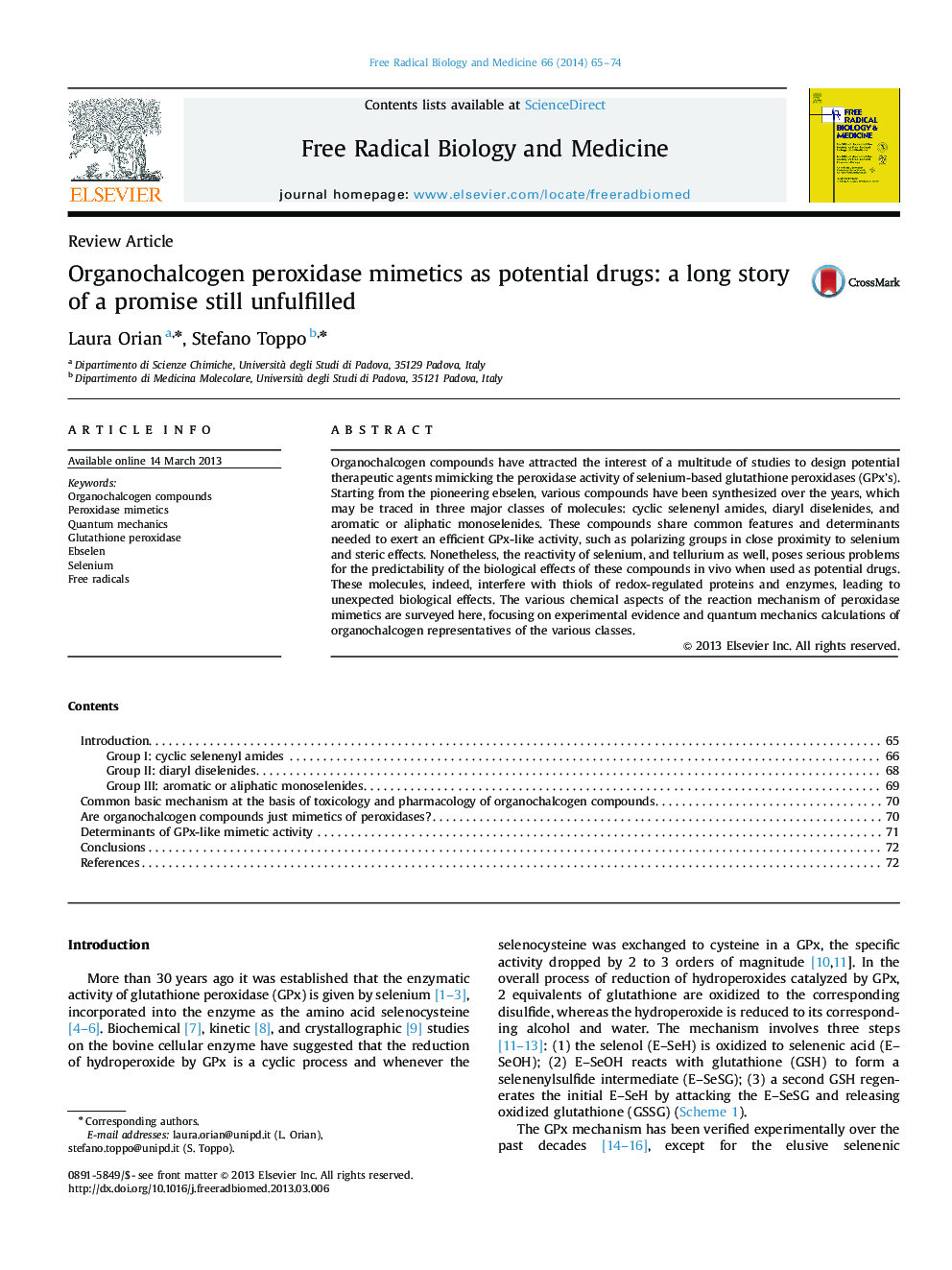| Article ID | Journal | Published Year | Pages | File Type |
|---|---|---|---|---|
| 1908328 | Free Radical Biology and Medicine | 2014 | 10 Pages |
•A critical survey of experimental evidence and quantum mechanics calculations of peroxidase mimetics is presented.•Organochalcogen compounds are drugs with multiple, often unpredictable, functions and questionable therapeutic value.•Current synthesized compounds cannot act as enzymes because of substrate nonspecificity.•They interfere with labile cysteine moieties and thus signaling pathways controlling apoptosis and proliferation.
Organochalcogen compounds have attracted the interest of a multitude of studies to design potential therapeutic agents mimicking the peroxidase activity of selenium-based glutathione peroxidases (GPx’s). Starting from the pioneering ebselen, various compounds have been synthesized over the years, which may be traced in three major classes of molecules: cyclic selenenyl amides, diaryl diselenides, and aromatic or aliphatic monoselenides. These compounds share common features and determinants needed to exert an efficient GPx-like activity, such as polarizing groups in close proximity to selenium and steric effects. Nonetheless, the reactivity of selenium, and tellurium as well, poses serious problems for the predictability of the biological effects of these compounds in vivo when used as potential drugs. These molecules, indeed, interfere with thiols of redox-regulated proteins and enzymes, leading to unexpected biological effects. The various chemical aspects of the reaction mechanism of peroxidase mimetics are surveyed here, focusing on experimental evidence and quantum mechanics calculations of organochalcogen representatives of the various classes.
Graphical abstractFigure optionsDownload full-size imageDownload high-quality image (74 K)Download as PowerPoint slide
